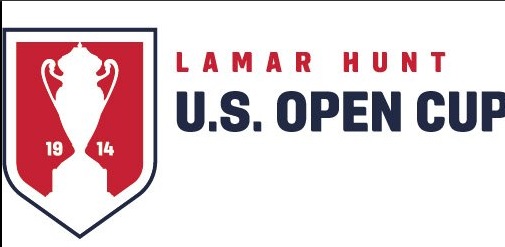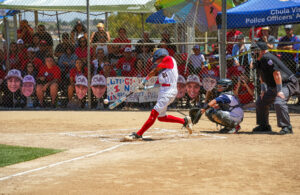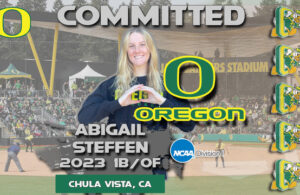Issues in the Lamar Hunt Open Cup – Part 2
- Updated: June 29, 2016

This week American soccer fans will watch the 2016 Lamar Hunt U.S. Open Cup Round of 16 matches. Fourteen MLS teams and two NASL teams made it to this round. In Part 1 of this series, I discussed the new rule introduced this year that prevented MLS-affiliated teams and the New York Cosmos B from competing in the tournament. I originally planned to write about television broadcast in Part 2, but that more important topic will be covered last in Part 3. For Part 2, I decided to discuss the fixed bracket geographical pairings that U.S. Soccer implemented in 2015 for the Round of 16 games.[1]
In past editions of the U.S. Open Cup, American soccer teams from across the country competed against each other for the Round of 16. Prior to 2015, administrators kept the bracket flexible, but still geographically-based. This flexibility allowed for more dramatic matches.
2012:
Chivas USA vs. Carolina Railhawks New York Red Bulls vs. Harrisburg City Islanders Philadelphia Union vs. D.C. United Dayton Dutch Lions vs. Michigan Bucks Colorado Rapids vs. Sporting Kansas City Charlotte Eagles vs. San Antonio Scorpions Cal FC vs. Seattle Sounders FC Minnesota Stars vs. San Jose Earthquakes
2013:
New England Revolution vs. New York Red Bulls D.C. United vs. Philadelphia Union Sporting Kansas City vs. Orlando City FC Dallas vs. Houston Dynamo Carolina Railhawks vs. Chivas USA Real Salt Lake vs. Charleston Battery Portland Timbers vs. Tampa Bay Rowdies Chicago Fire vs. Columbus Crew
2014:
Philadelphia Union vs. New York Cosmos Carolina Railhawks vs. LA Galaxy Sporting Kansas City vs. Portland Timbers Houston Dynamo vs. FC Dallas Colorado Rapids vs. Atlanta Silverbacks Seattle Sounders vs. San Jose Earthquakes New England Revolution vs. Rochester Rhinos Chicago Fire vs. Columbus Crew
Then, in 2015, U.S. Soccer implemented the new fixed bracket policy and MLS teams (along with one NASL and one USL team) traveled many less miles to play opponents in their geographic region.
2015:
Orlando City SC vs. Columbus Crew Philadelphia Union vs. D.C. United Chicago Fire vs. Charlotte Independence Houston Dynamo vs. Colorado Rapids New York Red Bulls vs. New York Cosmos Sporting Kansas City vs. FC Dallas
Real Salt Lake vs. Portland Timbers San Jose Earthquakes vs. LA Galaxy
2016:
Chicago Fire vs. Columbus Crew Real Salt Lake vs. Seattle Sounders FC Philadelphia Union vs. New York Red Bulls Houston Dynamo vs. Sporting Kansas City New York Cosmos vs. New England Revolution Orlando City SC vs. Fort Lauderdale Strikers FC Dallas vs. Colorado Rapids Portland Timbers vs. LA Galaxy
U.S. Soccer chose this new format “to minimize the possibility of clubs being required to travel long distances for matches.”[2] Their reasoning is understandable, but it comes at a cost to fans and to lower division teams.
Two years in a row, fans saw the Carolina Railhawks overcome MLS sides like the LA Galaxy and Chivas USA. This matchup with the Galaxy created a rivalry as seen in TV advertisements in North Carolina that depict highlights from those victorious matches.
Now after 2015, fans will witness less organic rivalries (with some exceptions). The matchups will become more predictable as the years continue.
Before the Fourth Round and Round of 16, the NPSL, PDL, USCS, USASA, and USSA teams at times travel relatively further than MLS, NASL, and USL—and with much less funding. Therefore, one might wonder if this policy purposely only helps the MLS teams that make it to the Round of 16 since only a few non-MLS clubs make it to this level in the competition anyways.
The fixed bracket will continue undoubtedly; however, U.S. Soccer should consider implementing this policy from the start of the tournament. It is important to note that in the 2016 Annual General Meeting Book the 2015 summary of the Open Cup Committee reported that first round games
were made on a geographic basis to minimize travel times and expense for the teams. Even with this provision, a number of clubs endured significant travel due to the concentration of Division II and Division III sides in the southeastern U.S.[3]
This report shows lower division clubs in NPSL, PDL, USCS, USASA, and USSA would also benefit from a fixed bracket. Yet, it might reduce some of the excitement generated at games where teams face new opponents each year; however, U.S. Soccer set a precedent with the Round of 16. In the end, lower division clubs also deserve equal opportunities to save money as their MLS competitors.
What do you think?
I would like to hear your thoughts—whether you agree or disagree—so you may contact me at @patsalkeld. Also, feel free to check out my personal website at www.patricksalkeldhistorian.wordpress.com.
[1] “102nd Lamar Hunt U.S. Open Cup Unveils Format, Record Number of Teams,” U.S. Soccer, February 4, 2015, http://www.ussoccer.com/stories/2015/02/04/12/45/150204-usoc-unveils-format-for-2015.
[2] “102nd Lamar Hunt U.S. Open Cup Unveils Format, Record Number of Teams,” U.S. Soccer, February 4, 2015, http://www.ussoccer.com/stories/2015/02/04/12/45/150204-usoc-unveils-format-for-2015.
[3] “Open Cup Committee Report,” U.S. Soccer Annual General Meeting February 26-28, 2016, http://resources.ussoccer.com/images/160127-AGM-PDF-FINAL.pdf.
Stay with us at Calisportsnews.com as we will keep you up-to-date on all things LA Galaxy and the rest of the LA sports teams! All Cali, all the time!



